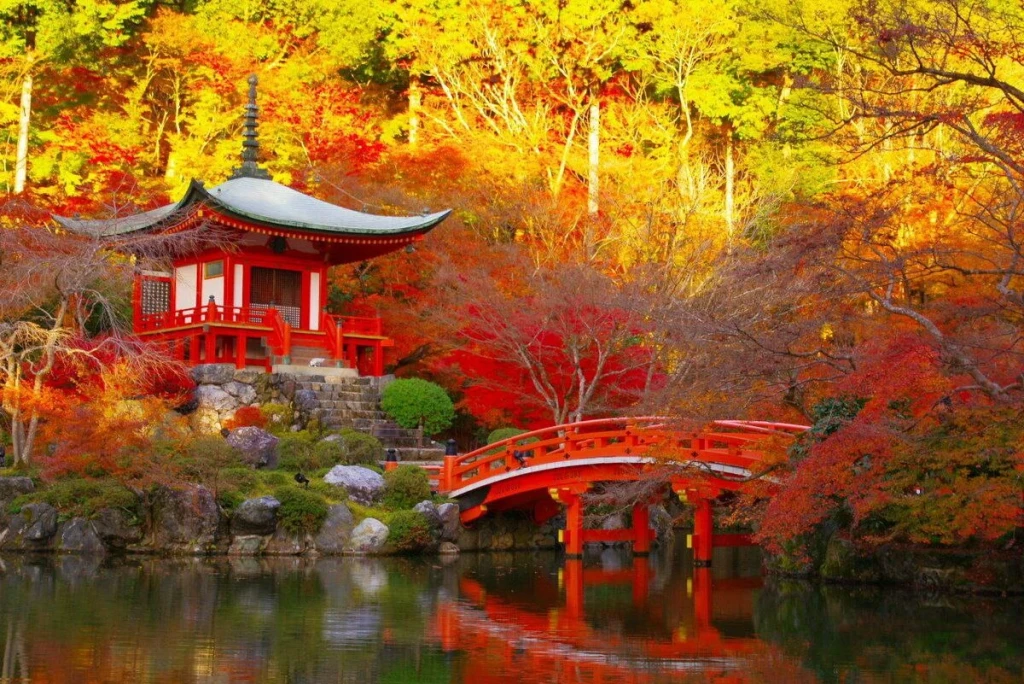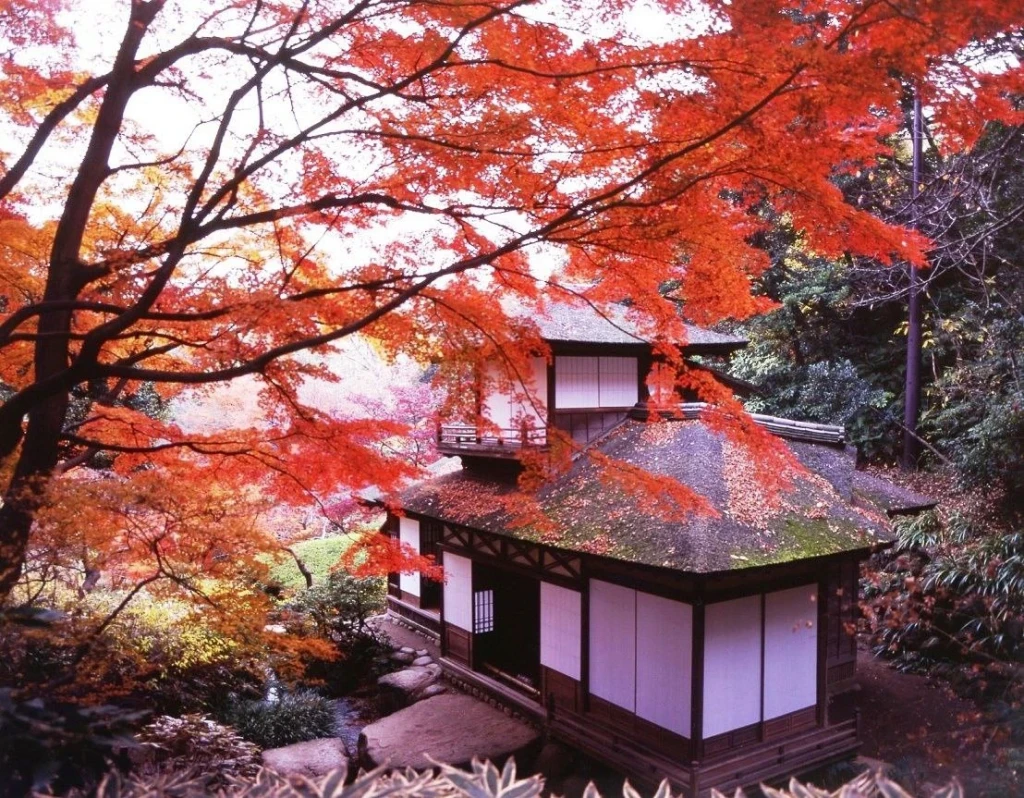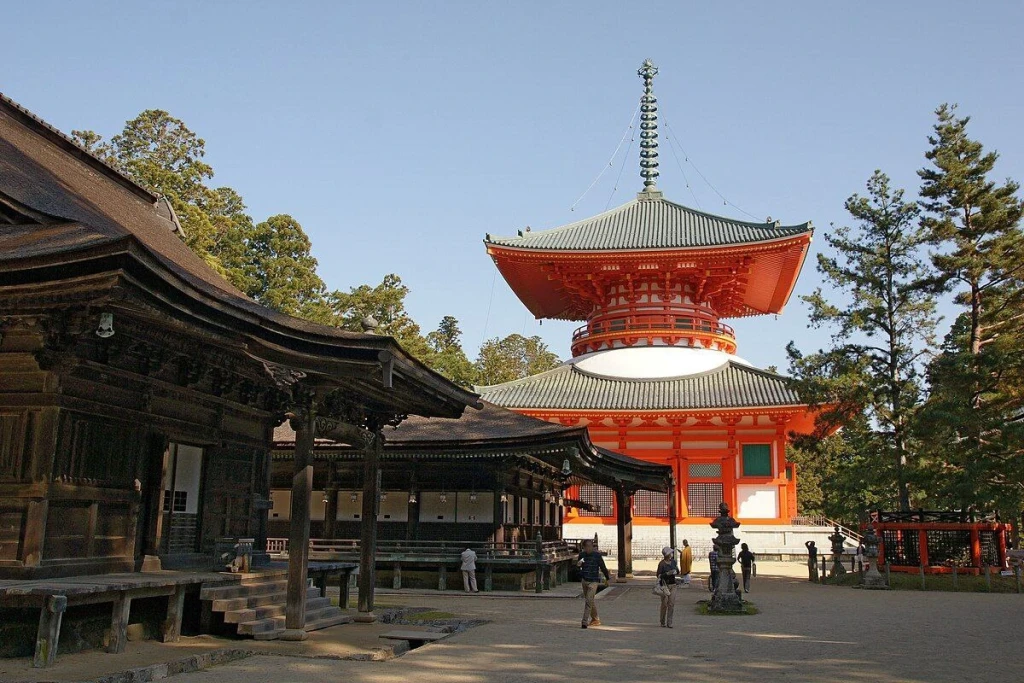
Autumn in Japan is one of the most impressive times of the year, when nature dresses in vibrant colors and many interesting events and festivals are held across the country. With a poetic touch unique to the Japanese, they have even coined special words "momiji" and "koyo" for the appreciation of red and yellow leaves—the symbols of autumn. The best places to admire them are in the mountains or by the lakes, but you can see them almost everywhere. Most temples and shrines have their own beautiful parks with maples.
Visiting Japan in November offers many interesting opportunities. And if you live in Bali, you absolutely must seize the chance to visit the Land of the Rising Sun at least once. The price of tickets from Denpasar to Tokyo is currently only 2.5 million rupiah one way. It's akin to flying from Moscow to Sochi round-trip. In December-January, ticket prices will start to rise, reaching an average of 3-3.5 million rupiah one way.
We offer some ideas on how to spend your time in Japan in November.

1. Autumn Foliage.
November is the time of the golden autumn, when tree leaves acquire bright shades of red, orange, and yellow. November in Japan is already becoming cool, and it can be cold at night. So it's advisable to bring warm clothing. Of course, this could also be an additional motivation for a shopping spree during your visit to Japan. Moreover, there are plenty of hot springs throughout the country. And after the Balinese heat, it's quite pleasant to feel the freshness of a Tokyo morning.
All temples and shrines in urban areas are often surrounded by parks where you can enjoy the autumn foliage. You don't have to travel far or plan a detailed route—just visit any. In Tokyo, Meiji Jingu Gaien Stadium and Ueno Park are particularly popular. In the city center, check out Koishikawa Korakuen Gardens near Tokyo Dome and Rikugien Gardens in Ikebukuro.
If you don't have much time, you can make a day trip to Nikko, located two hours from Tokyo. It is home to one of Japan's most famous and impressive shrines—Nikko Toshogu. Just an hour from Tokyo on the coast is the temple city Kamakura. If you find yourself there at twilight, make sure to visit Hase Temple and admire the illuminated maples.
If you plan your trip to Japan for mid-November, be sure to visit the enchanting Kyoto. It is 1.2 to 2.5 hours by train from Tokyo, depending on the type of train. The autumn colors start around mid-November. You can appreciate the autumn hues of the ancient capital at any temple or along the waterfront. We recommend visiting Kiyomizu-dera Temple. From mid-November, they light up the trees, and it's incredibly beautiful—it takes your breath away. Just bear in mind that it may be quite crowded in Kyoto at this time.
If the spirit of adventure is still running high within you, and you're ready to dash to Japan in the coming days, make sure to visit the Buddhist complex of Koyasan in Wakayama. This temple town on the mountain top turns colors earlier than Kyoto.

2. Illumination.
As winter approaches and the nights grow longer, it's time for evening illumination. Christmas illuminations in Japanese cities are switched on from November to February. It’s a grand spectacle of a scale you can only find in Japan and only at this time of year. The most amazing and spectacular illuminations can be seen at "Sagamiko Illumillion" in Kanagawa and "Nabana no Sato Winter Illumination" in Mie.
3. Festivals.
In November, numerous traditional festivals are held throughout Japan. For example, the "Daishun-Daikai" (autumn rice festival), "Tenjin-matsuri" in Osaka, a dance festival in Aomori, and more. If you find yourself on Kyushu between November 11 and 31, check out the sumo tournaments. The last major tournament of the year takes place at Fukuoka Kokusai Center. It's best to book tickets in advance.
Additionally, many cities organize autumn fairs and exhibitions, where you can try local delicacies, buy souvenirs, and enjoy cultural performances.
4. Culinary Delights.
November is the time for harvest and unique autumn dishes. Be sure to try "yokan" (bean paste), roasted chestnut flour, and other seasonal treats. For example, mushrooms (shiitake, matsutake) and dishes made with autumn vegetables and rice. Don't forget to sample local sweets like "manju" (cakes with sweet fillings) and "mochi" (rice cakes).
5. Hot Springs.
Autumn is also an excellent season for relaxing in hot springs, which are a pleasant remedy for the autumn chill. Visit onsens (hot springs), especially in regions like Hakone or Beppu for complete relaxation in the autumn atmosphere. In Shizuoka, there's a popular coastal resort with hot springs, Atami Onsen. And if you decide to travel to Kyoto, be sure to warm up in Arima Onsen—a well-known resort in Hyogo Prefecture near Kyoto.
6. Buying Souvenirs.
In autumn, you can purchase many unique souvenirs in Japan, reflecting the richness of Japanese culture and traditions. In major cities like Tokyo and Osaka, you'll find many shops with unique Japanese goods, including ceramics, textiles, and sweets. Here are some of the most famous ones.
Tokyo:
- Harajuku: Takeshita Street in Harajuku offers many shops with fashionable accessories, unusual souvenirs, and unique items.
- Ginza: This area is known for its prestigious shops and boutiques where you can find quality gifts and souvenirs.
- Akihabara: If you're interested in anime and manga, there are numerous shops with figures, posters, and other related items.
Kyoto:
- Nijo-jo: Around the castle and temples, there are many shops selling traditional goods, such as kimonos, tableware, and sweets.
- Arashiyama: Here you'll find not only beautiful landscapes but also many shops with local souvenirs, such as ceramics and lacquerware.
Osaka:
- Dotonbori: A popular tourist spot with many shops and stalls offering vibrant souvenirs, street food, and snacks.
- Umeda: Shopping centers like "Grand Front Osaka" offer a variety of souvenirs, including local delicacies.
7. Halloween Theme.
Many events and shops may still display Halloween attributes, creating a unique festive atmosphere.
8. Tours and Historical Sites.
Autumn is the perfect time to visit places producing sake and tea. You can join organized tours, which often include autumn landscapes, autumn festivals, as well as tours of historical sites. You can also choose themed tours with visits to wineries or tea plantations.
Japanese temples and shrines are especially beautiful in autumn. We also recommend visiting historical castles such as Himeji Castle, located in the city of the same name in Hyogo Prefecture, and Nijo Castle in Kyoto.
Visa
You can obtain a primary visa to Japan from Indonesia for 14 or 30 days only with a KITAS.
When applying for a Japan visa, it is important to know:
- The visa is pasted into the passport;
- Issued in Bali;
- An Indonesian bank statement is required;
- For a business visa, an invitation is needed;
- The visa is issued like a Schengen. They may refuse, they may change the duration, all based on the documents submitted during the application;
- To obtain a multiple-entry visa, you need to have visited the country at least twice with a single-entry visa;
- The cost of the visa or document requirements can change at any time, without notice from the consulate;
- All documents must be A4 size.
The cost of processing is from 2,600,000 rupiah.
Processing time up to 10 working days.
Visiting Japan in autumn is a unique experience you will never forget. Autumn is the perfect time to travel to Japan for lovers of nature, culture, and delicious food! And Legal Indonesia will help you do it as economically, quickly, and easily as possible.
Contact us for a consultation:
Telegram - @legalindonesia / @LegalIndonesiaBot
You can add one right now!